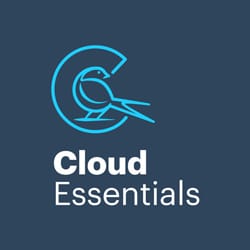Your roadmap for a seamless tenant-to-tenant move
Microsoft 365 tenant migrations have a reputation for being deceptively complex – and with good reason. Behind every move lies a tangle of users, data, permissions, policies, and regulatory obligations. One misstep can trigger downtime, data loss, or security exposures that ripple across the business.
Add in evolving access controls, changing workflows, and the potential for user confusion, and it’s easy to see how even well-resourced internal teams can find themselves off course.
That’s why many organisations choose to work with a dedicated migration partner – someone who knows the pitfalls, speaks “Microsoft” fluently, and can deliver a seamless transition with minimal disruption.
This guide offers the kind of roadmap you should expect when working with an experienced partner – or a solid blueprint to shape your own journey if you’re going it alone.
Start with the “Why”
Every migration needs a clear driver. Is it a merger? A restructure? A divestiture or compliance requirement? Define the reason early and document it well, because that context will shape every decision that follows.
It’s a good idea to hold a proper kick-off meeting with business and technical stakeholders to align on the goals, timeline, and expected outcomes – and to clarify how the migration will support broader business objectives, impact end users, and deliver measurable value.
This can then be used to build a business case that covers scope, budget, risks, and success metrics. When priorities shift or challenges crop up, this is the reference point that keeps everyone moving in the same direction.
Assess your current environment
Before you even think of moving data, take a detailed look at both the source and target tenants. Catalogue all users, mailboxes, OneDrive accounts, Teams and SharePoint sites, licences, and third-party applications (both in the cloud and on-prem).
Then dig deeper. Map out how these services connect. Which Teams rely on specific SharePoint sites? What workflows are tied to Exchange? Which business processes depend on custom integrations or unique configurations?
Pay close attention to security and compliance frameworks. Document permission structures, sensitivity labels, DLP rules, and policy exceptions. These details will shape how smoothly your migration runs – and how securely it lands.
Plan your move
With a clear view of your environment, it’s time to start shaping the migration itself. Decide which users, groups, mailboxes, sites, and data need to be moved, and what can be archived or purged altogether. Assign clear destinations for each data type, from personal files in OneDrive to project sites in SharePoint and communications in Teams.
Remember, you can (and should) prioritise moving data and apps based on business criticality, usage patterns, and sensitivity. Not everything needs to migrate at once. This is your chance to streamline – take it!
Don’t overlook retention, deletion, or compliance obligations, either. Define policies upfront to avoid carrying over unnecessary risk and/or dead weight.
It’s also vital to think beyond replication. Plan for optimisation. A well-structured target environment can improve performance, reduce cost, and make future management far easier.
Review and enhance target tenant security
Before you migrate, make sure the destination tenant is ready to meet your organisation’s security and compliance standards. Start with a thorough review of its current security posture and close any gaps you find.
Enable MFA, apply Conditional Access, configure DLP rules, and review admin roles and permissions. Validate that sensitivity labels, retention policies, and audit logging are correctly configured and aligned to your governance model.
Remember, the goal isn’t just to match what you had before, but to improve it.
Security incidents mid-migration are rare, but when they happen, they’re high impact. We strongly recommend developing and testing an incident response plan in advance, so you’re ready to act if anything does go wrong during (or after) your transition.
Minimise end user impact
A smooth migration shouldn’t leave users confused or frustrated. Wherever possible, automate the process to reduce manual steps and limit disruption.
Well-timed, clear communication is key. Let users know what’s changing – whether it’s login methods, file locations, or Teams setups – and when it’s happening. Provide step-by-step guidance, in plain language, and make sure support is on hand before, during, and after the transition.
A dedicated support channel – be it a helpdesk queue, live chat, or hotline – can make a big difference. Quick responses go a long way in keeping confidence high and productivity intact.
Enable coexistence and continuity
Most migrations don’t happen overnight. During the transition, users across different parts of the business may be working in separate tenants – sometimes for days or weeks. Coexistence planning is what keeps collaboration flowing in the meantime.
Set up mail forwarding, calendar sharing, and guest access to bridge the gap. Make sure users can still book meetings, access shared files, and communicate easily, even if they haven’t been migrated yet.
Think through edge cases like distributed teams, rebranded domains, or new subsidiaries. Make sure nobody gets left out of the loop.
Schedule regular checkpoints to review how things are running. That way, if something breaks continuity, you can fix it fast and minimise impact.
Communicate proactively and often
When it comes to tenant migrations, silence causes confusion. A clear communications plan – shared early and updated often – can make all the difference to user experience.
Start at least 30 days out. Let people know what’s coming, when it’s happening, and how it will affect them. Be specific about changes to tools, access, or workflows.
Use multiple channels – email, Teams, intranet – to share updates, FAQs, and guidance. Keep the tone calm, clear, and focused on benefits.
Just as importantly, listen. Set up feedback channels so users can ask questions, raise concerns, and feel supported throughout the process. Quick, thoughtful responses build confidence and reduce your support load in the long run.
Select and configure migration tools
Choosing the right migration tool isn’t just a technical decision. It’s foundational to your approach. You’ll need something that supports the workloads you’re moving (Exchange, SharePoint, Teams, OneDrive, etc.), handles metadata and permissions correctly, and aligns with your timeline.
Look for features that simplify complexity: automation, robust reporting, and the ability to run phased or workload-specific migrations. Don’t rely on assumptions – run a pilot test first. Move a representative sample of users and data to validate configurations and uncover any surprises early.
Document your setup, and create a rollback plan in case issues crop up during the live migration. Preparation here saves time, stress, and rework later on.
Design your target environment
We’ve said it before, and we’ll say it again: don’t just copy your old environment into your new one. Use this opportunity to build a tenant that reflects how your organisation works today, and how it plans to grow.
Work with IT architects to design a structure that supports your operational model. That includes thoughtful planning around organisational units, Microsoft 365 groups, and naming conventions that will scale over time.
Make sure your workloads are integrated in a way that feels seamless to users, whether they’re working in Teams, SharePoint, or Outlook. Bake in security, compliance, and governance from the outset, so nothing slips through the cracks post-migration.
And don’t forget about long-term manageability. Define how identities, devices, and data will be governed in the new environment, and who’s responsible for what.
Migrate in logical phases
A phased approach gives you control, and gives users the space to adapt. Start with user mailboxes and personal OneDrive content, then move on to collaborative platforms like Teams and SharePoint.
Group migrations in logical batches, by department, region, or business unit. This simplifies troubleshooting and allows your support team to focus fully on each wave.
Build a detailed migration schedule with clear timing, validation steps, and downtime windows where necessary. Don’t forget contingency plans. Even well-prepared migrations can hit snags, and it’s far easier to course-correct when you’ve already mapped out the “what ifs.”
Monitor, report, and adapt
Once migration is underway, visibility is everything. Use dashboards and reporting tools to track progress in real time, flag failures, and identify bottlenecks before they cause disruption.
Keep stakeholders informed with regular updates – what’s been completed, what’s next, and where any risks still lie. Transparency builds confidence and helps maintain momentum, especially in longer, multi-phase migrations.
Use feedback and performance data to fine-tune your approach as you go. No migration plan survives first contact unchanged, but the best ones adapt quickly and finish stronger for it.
And don’t just stop at the finish line, either. Document what worked, what didn’t, and where improvements could be made. Those lessons will save time and reduce risk on future phases – or future migrations altogether.
Validate and optimise post-migration
Once the migration is complete, it’s time to verify that everything has landed properly. Check that users can access the resources they need, data is intact, permissions are in place, and no critical functionality is missing.
This is also your chance to unlock new value. Explore underused Microsoft 365 features (like built-in collaboration tools, automation, or security enhancements) and turn them on where they’ll have a positive impact on productivity, collaboration and/or security.
Make sure training and support continue beyond cutover. A seamless transition doesn’t end with data transfer – it continues through confident, productive use.
And don’t lose that momentum! Review what’s working, identify areas to improve, and keep tuning your environment for performance, cost-efficiency, and future growth.
Ready, set, migrate!
Migrations at this scale touch every corner of your organisation – from user experience to governance, compliance, and long-term cost management. Getting it right takes planning, precision, and the ability to adapt when things get complex.
At Cloud Essentials, we’ve delivered Microsoft 365 tenant migrations across highly regulated, security-sensitive environments, often under tight timelines and evolving business conditions. From strategic planning and tool selection to coexistence, user adoption, and post-migration optimisation, we know how to keep things moving without disrupting your business.
Whether you’re managing the project internally or looking for a trusted partner to lead the way, the steps outlined here are a solid starting point. And if you decide you’d like an experienced hand at the tiller, we’re ready when you are.

